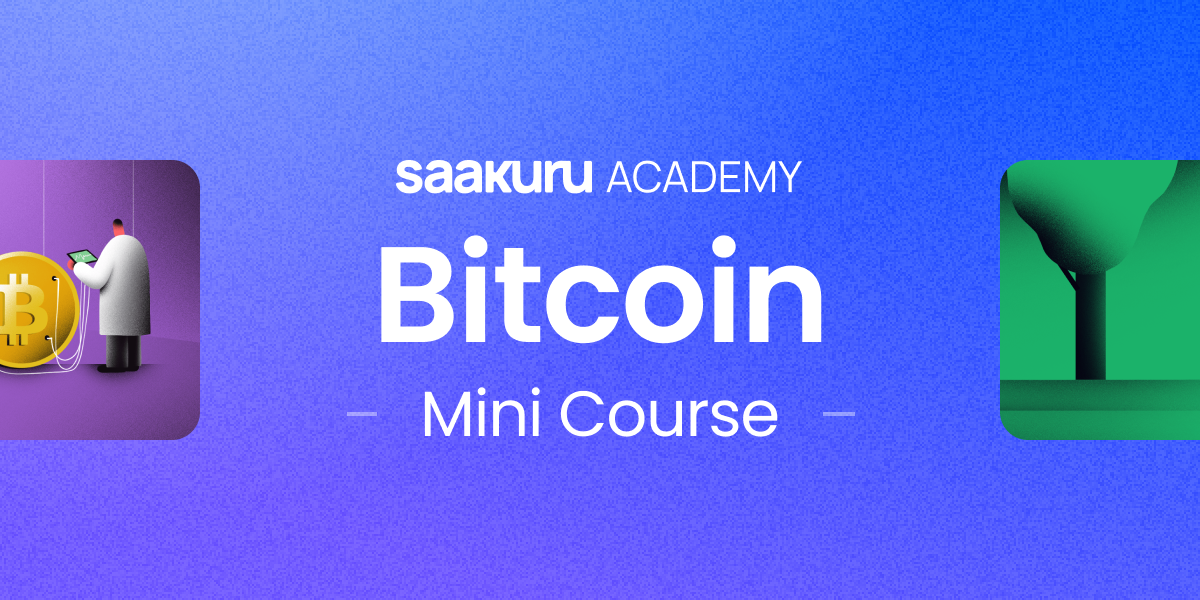
Web1 vs. Web2 vs. Web3: What’s the difference?
As we slowly but surely push toward the Web3 era of the internet, many of us may be wondering what exactly that entails — and how it’s different from Web1 or Web2. You’ve likely heard Web3 mentioned a lot if you’re interested in things like cryptocurrencies, NFTs, and the Metaverse, but it’s easy to overlook its significance and what it means.
In this AAG Academy guide, we’ll explain what Web1, Web2, and Web3 are, as well as how the internet has evolved over time. We’ll also cover Web3 in more detail, and look at the technologies it relies on, the advantages it brings, and why cryptocurrency will be so important.
What is Web 1.0?
Web 1.0 or Web1 is the earliest version of the World Wide Web, and it’s what you would have used if you connected to the internet anytime during the 1990s. It mostly consisted of what we would now consider primitive web pages that were primarily focused on content delivery — or providing information. They were usually static and served from a file system.
As such, Web1 sites couldn’t do much. They were “read-only” pages, created and maintained by a relatively small number of people, that visitors could not contribute to or interact with in any significant way. As such, the internet at this time was mostly passive, although simple text chat and file sharing using the bulletin board system (BBS) did come later.
Web1 did have one advantage over the modern internet, and that was that all advertisements were banned. It was possible to create pages that promoted businesses or services, but displaying ads like those we are often overwhelmed by when we browse the web today was not allowed. Sadly, that changed as the internet evolved.
The history of Web 1.0
Web1 dates back to 1989, when Tim Berners-Lee created a system for sharing information between universities and institutes around the world. Back then, it was described as a “hypertext project” that would allow a “web” of documents to be viewed by “browsers.” It was named “WorldWideWeb” in a proposal published in 1990.
By the of that year, the British scientist had the first web server, as well as a browser that could access it, up and running at the European Organization for Nuclear Research (CERN). The server itself was a NeXT computer developed by NeXT, Inc., the company that was founded by Steve Jobs following his ousting from Apple in 1985.
The world’s first web page, which is still live today, contained links to information about the WorldWideWeb project, as well as technical details for creating a web server. Links to other web servers were added as they became available, while a primitive search function, which relied on keywords, allowed visitors to more easily find what they were looking for.
In 1991, Berners-Lee released the WWW software, which included a browser, web server software, and information for developers. This accelerated development of what we now call the internet, and by the end of 1994, more than 10,000 web servers were being used by more than 10 million people around the world.
What is Web 2.0?
Web 2.0 or Web2 is the current, “read-write” version of the internet that we’re all familiar with. It is made up of rich and dynamic content that we can both interact with and contribute to, paving the way for things like blogging, social networks, photo and video sharing platforms, podcasting, online apps and games, and lots more. It’s much more active than the passive Web1.
Because of its diversity, there is no single definition of Web2, so many think of it as a collection of key components that have grown over time to make today’s internet more immersive and more interactive than ever before. Those components include software, social networking, other user-generated content, crowdsourcing, and wikis.
The history of Web 2.0
One of the most important things to note about Web2 is that it cannot really be considered as an upgrade to Web1 — at least not in the same way we might upgrade an operating system or an application. Instead, it was more of an evolution of the internet that happened gradually over time as new technologies were introduced and adopted.
The term Web 2.0 was first coined by Darcy DiNucci, an author and web designer, in a 1999 article titled “Fragmented Future.” In that piece, DiNucci noted that “the first glimmerings” of a more interactive internet, which would be accessible on a wide variety of devices, was beginning to appear. The term was popularized by the Web 2.0 conference in 2004.
Early Web2 sites allowed for simple interactions, like commenting on articles and creating a user account, but they soon evolved to allow for things like blog hosting, chat rooms and social networking, online games and applications, and more. Today, Web2 allows us to share almost everything, stream our favorite music and movies, and have conversations with AI systems.
Given that the first Web2 sites date back to the early 2000s, one might assume that we would have entered into a new era of the internet a long time ago. But that’s not the case. Almost all of the websites and online services we use today are still considered to be a part of the Web2 era. However, thanks to new technologies, we are slowly moving toward the much-anticipated Web3.
What is Web 3.0?
Web 3.0 or Web3 is what we consider to be the next generation of the internet — an evolution of Web2. It comes with an even greater focus on content creation, and better incorporates more advanced technologies, like artificial intelligence and machine learning. One big advantage of Web3 is its more robust security systems, addressing a longstanding problem with Web2.
Many aspects of Web3, such as cryptocurrency, NFTs, and the Metaverse — all of which are considered key components — are heavily reliant on blockchain technology. They also help push a decentralized ecosystem powered by peer-to-peer networks that is not governed or controlled by a small number of centralized entities, allowing a “read-write-own” system.
Web3 as it stands today still uses many of the same technologies as Web2, such as HTML5 and JavaScript, in much the same way Web2 heavily relied on Web1 technologies in its infancy. However, it is pushing toward greater and more modern systems in an effort to make the internet more open, more secure, and more capable than ever before.
What are the advantages of Web3?
Although it’s still incredibly early for Web3, it already has a number of notable advantages over Web2. Those are:
Decentralized
As we touched on above, Web3 is pushing toward a decentralized system that is powered by peer-to-peer networks — much like many of the blockchain projects in existence today. That means it won’t rely on centralized servers that are operated by just a handful of the world’s biggest tech companies.
Blockchains
In addition to prioritizing peer-to-peer networks, Web3 makes use of blockchains for immutable, distributable databases. This brings several advantages of its own, which include greater transparency, increased security, and better stability.
Cryptocurrency and NFTs
Today’s Web2 world is heavily reliant on traditional payment methods, while cryptocurrencies are only used by a relatively small percentage of people. Web3 hopes to change that by standardizing digital currencies like Bitcoin and Ethereum. It also embraces NFTs, which will play an even larger role, particularly when it comes to Web3 and Metaverse games.
AI and virtual reality
We’re already getting a taste of how powerful AI can be, and Web3 takes advantage of that by leaning on smarter, more autonomous technologies. It also incorporates augmented and virtual reality better than ever before, particularly when it comes to Metaverse applications that allow users to build and explore virtual worlds.
How does crypto play a role in Web3?
Although the use of cryptocurrency has certainly risen, its use cases today remain very limited. Most of the Web2 internet still uses traditional payment methods, like debit and credit cards, which rely on banks and payment processors. This creates barriers for certain individuals who do not have a bank account, or happen to live in unsupported regions.
Web3’s use of cryptocurrency completely eliminates those problems. There is no need for banks or payment processors, and there are no barriers to entry. So long as you have the basics — specifically an internet connection and a device that’s capable of holding a cryptocurrency wallet — then you should eventually have access to everything Web3 has to offer.
What’s more, Web3 will integrate cryptocurrency much more tightly, so it will be even easier to pay for goods and services using digital coins and tokens. Again, we’re already seeing signs of these in some places, like in Web3 games that use cryptocurrencies, but the hope is that it will become much more widespread as Web3 grows and establishes itself as the new standard.
References
- What is web 1.0
- What is Web 2.0
- Short history web
- The biggest advantages and disadvantages of Web 3.0
- Web3
Frequently Asked Questions
Today’s internet, which is considered Web2, isn’t perfect. And we will probably never get perfect, but we can at least address some of Web2’s biggest problems. Web3 aims to do that by leaning heavily on more modern technologies, like decentralized blockchains and peer-to-peer networks, cryptocurrencies and NFTs, and artificial intelligence.
It’s easy to invest in Web3 today by simply acquiring almost any popular cryptocurrency. The hope is that when Web3 takes off, many of today’s biggest digital currencies will only get bigger and even more important. However, if you want to invest in Web3 projects specifically, take a look at projects focused on pushing the next generation of the internet.
Web3 currently relies on a lot of the technologies we’re already using for Web2, like HTML5 and JavaScript. That’s simply because there are no viable and more improved alternatives to them yet. But it combines those with things like decentralized blockchains, peer-to-peer networks, and cryptocurrencies that currently play only a small role in the Web2 world.
Not quite. The Metaverse is a part of Web3 in much the same way that we could say social networks are a part of Web2, but it’s not the only part. There are lots of other aspects of Web3 that are not considered to be Metaverse-related.
Disclaimer
This article is intended to provide generalized information designed to educate a broad segment of the public; it does not give personalized investment, legal, or other business and professional advice. Before taking any action, you should always consult with your own financial, legal, tax, investment, or other professional for advice on matters that affect you and/or your business.
Get news first
Be the first to get our newsletter full of company, product updates as well as market news.

















